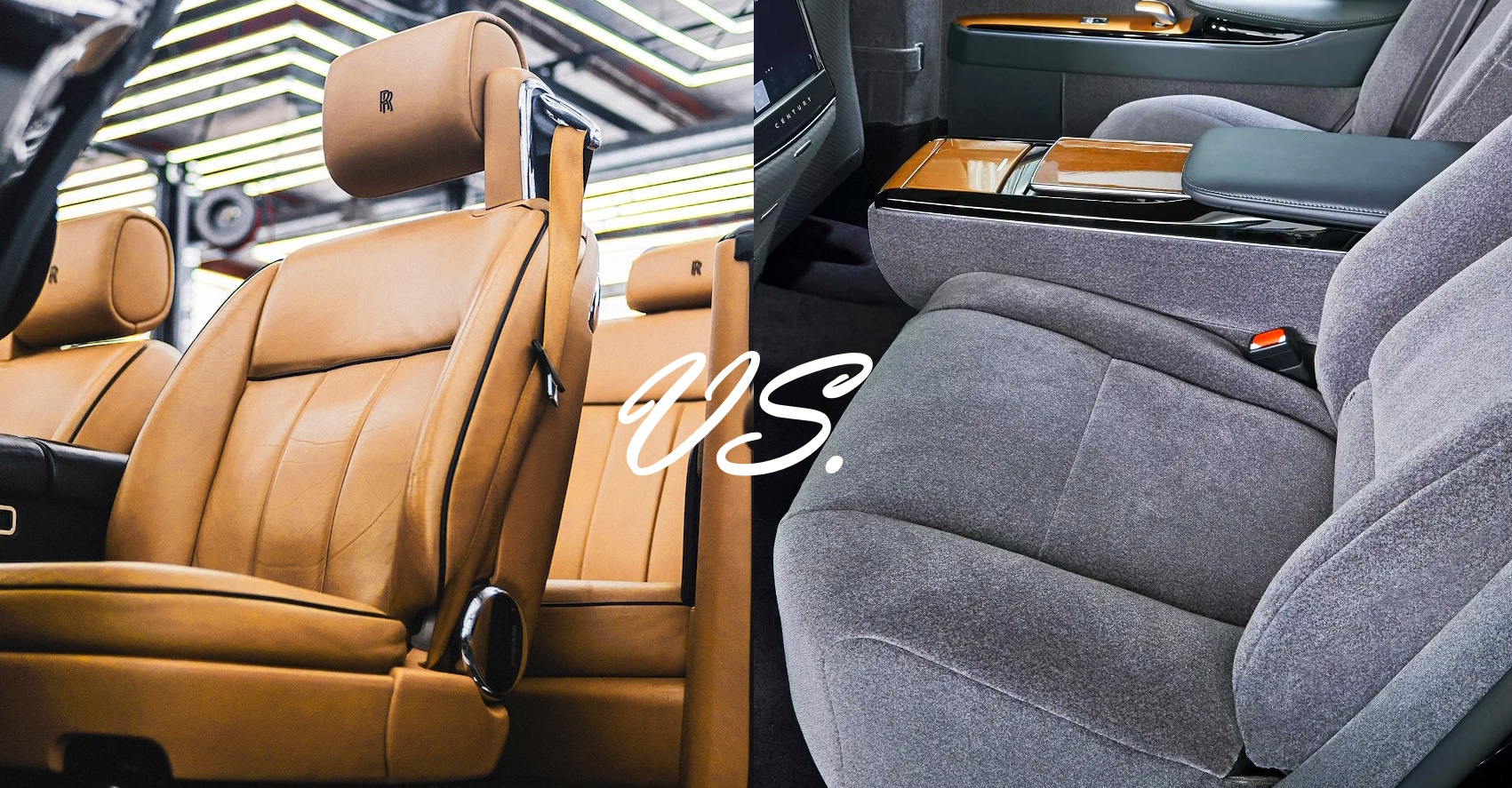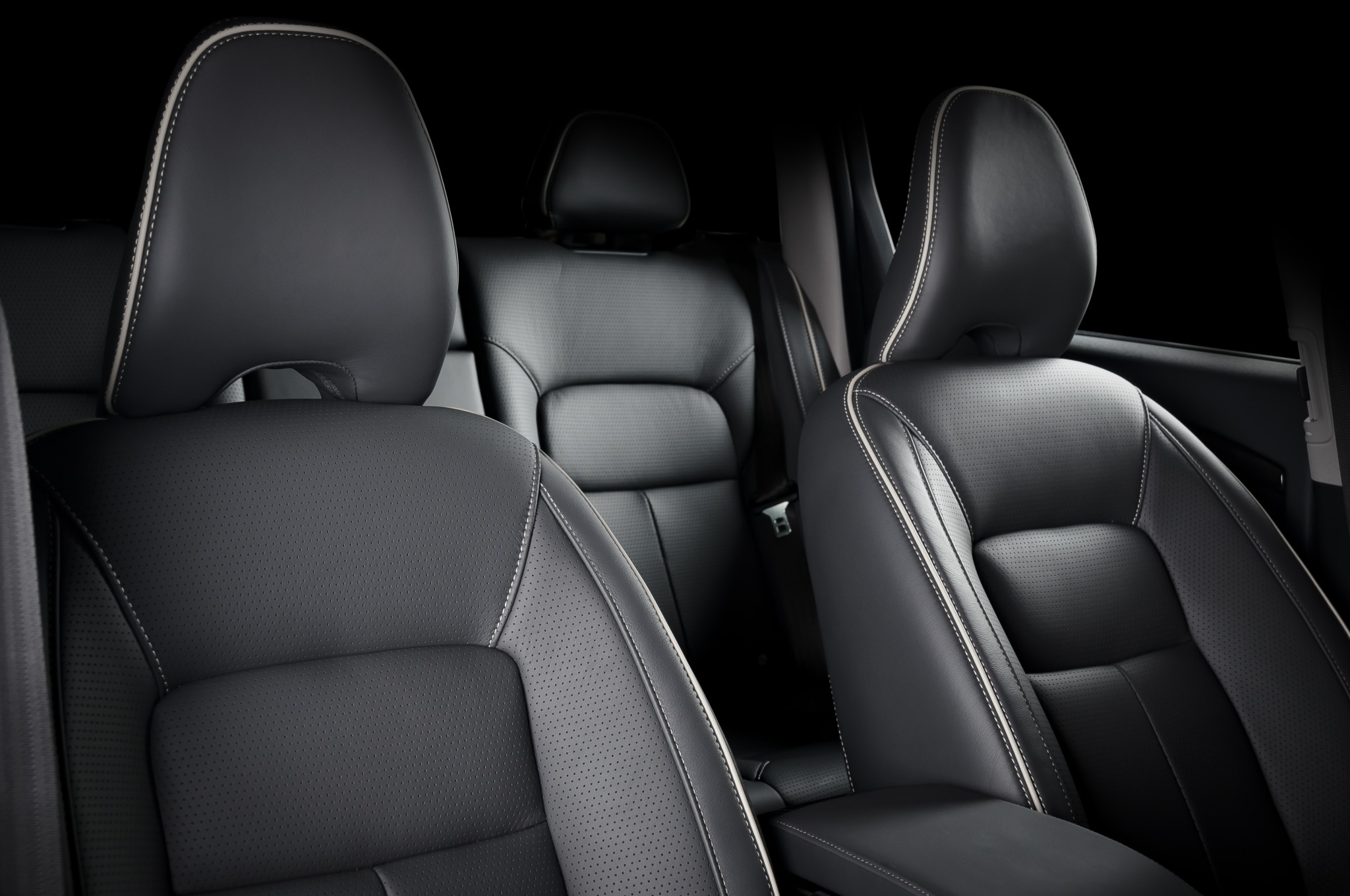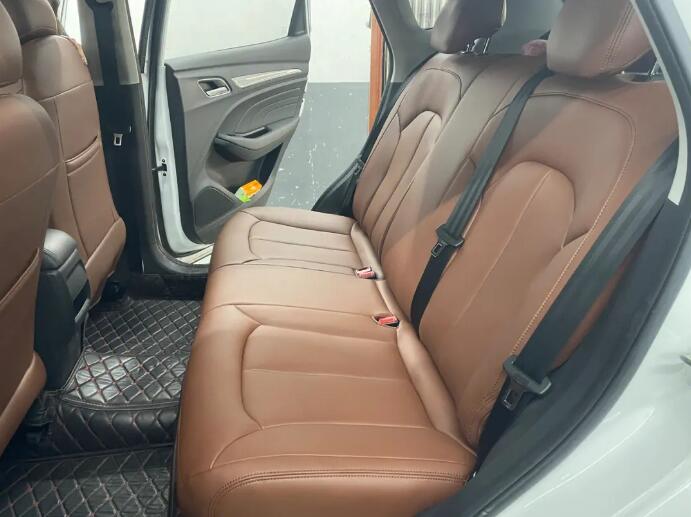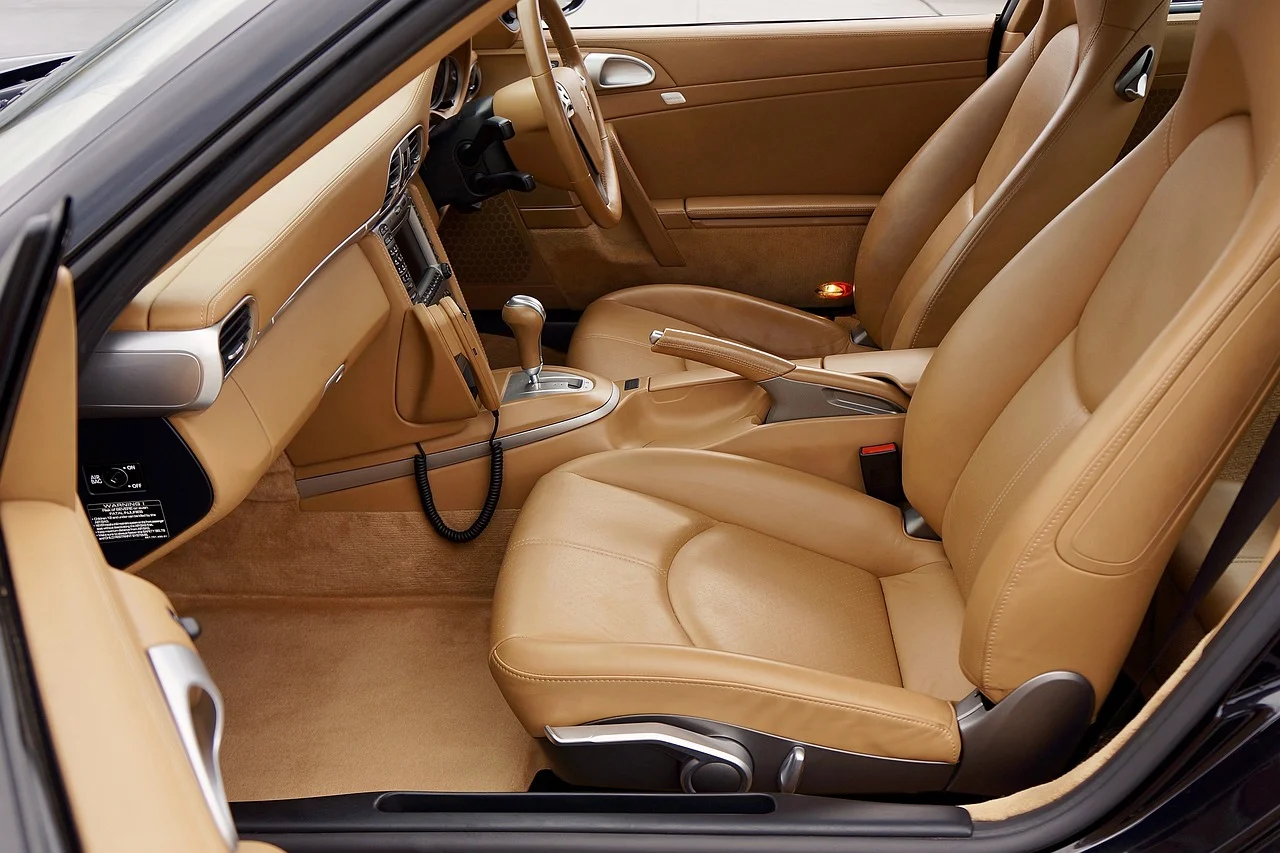Choosing between leather and cloth seats is a common decision for car buyers. Leather seats add luxury and are easy to clean, while cloth seats are cozy and more affordable. In this post, we will compare both options, looking at their comfort, maintenance, durability, and cost. Whether you’re upgrading your current car or picking out a new one, finding the differences between leather and cloth can help you make the best choice for your needs and preferences.

Leather vs Cloth Seats: A Detailed Comparision
Leather and cloth seats each come with their own set of advantages and disadvantages, making them suitable for different preferences and situations. Here’s a detailed comparison of the two:
1. Durability:
Leather seats: Leather is known for its durability and resilience. It’s less prone to tearing or staining compared to cloth seats. Even with regular use, leather seats can maintain their appearance for years, showing minimal signs of wear and tear.
Cloth seats: Cloth seats, while comfortable, are generally less durable than leather. They are more susceptible to staining, fading, and fraying, especially in high-traffic areas. Over time, cloth seats may show signs of wear, such as thinning fabric or visible threads.
2. Temperature Control:
Leather seats: In colder weather, leather seats can feel chilly initially but tend to warm up with the car’s heating system, providing comfort. However, in hot weather, leather seats can absorb heat, making them uncomfortably warm, particularly if the car is parked in the sun for an extended period.

Cloth seats: Cloth seats offer better temperature regulation. They are less affected by extreme temperatures, remaining relatively cool in hot weather and not retaining as much cold in winter. This makes them more comfortable for occupants regardless of the climate.
3. Maintenance:
Leather seats: Leather seats are relatively easy to clean. Spills can be quickly wiped away with a damp cloth, and specialized leather cleaners can be used for deeper cleaning. However, leather requires periodic conditioning to prevent drying and cracking, adding to the maintenance routine.
Cloth seats: Cleaning cloth seats can be more challenging, especially for removing stains. Spills may seep into the fabric, requiring specialized cleaning products or professional services to effectively remove them. Regular vacuuming and occasional steam cleaning are also necessary to keep cloth seats looking their best.
4. Cost:
Leather seats: Vehicles with leather seats typically come at a higher price point than those with cloth seats. This cost difference reflects the higher quality materials and craftsmanship involved in manufacturing leather seats, making them a luxury feature.

Cloth seats: Cloth seats are more budget-friendly, making them a popular choice for cost-conscious buyers. While they may lack the luxurious appeal of leather, cloth seats offer a practical option for those looking to save money without sacrificing comfort.
5. Luxurious Appearance:
Leather seats: Leather seats are synonymous with luxury and sophistication. They impart a premium look and feel to the interior of a vehicle, elevating its overall aesthetic appeal. The rich texture and smooth finish of leather exude elegance and refinement, enhancing the driving experience.
Cloth seats: While cloth seats may lack the luxurious appearance of leather, they offer versatility in terms of colors, textures, and patterns. Cloth seats can be customized to match the interior design of the vehicle or express the owner’s personal style. While not as upscale as leather, cloth seats can still contribute to a visually appealing and comfortable cabin environment.
6. Comfort:
Leather seats: Leather seats are often perceived as luxurious but may not provide the same level of comfort as cloth seats, particularly in extreme temperatures. In colder weather, leather can feel cold to the touch, while in hot weather, it can become uncomfortably warm. However, with proper climate control, leather seats can offer satisfactory comfort for many drivers.

Cloth seats: Cloth seats are known for their comfort and breathability. They are softer to the touch and provide a more cushioned feel, making them ideal for long drives. Additionally, cloth seats regulate temperature better than leather, remaining comfortable in both hot and cold weather conditions.
7. Breathability:
Leather seats: Leather seats may lack breathability, especially compared to cloth seats. The natural properties of leather make it less permeable to air, potentially leading to discomfort during extended periods of sitting, especially in warmer weather.
Cloth seats: Cloth seats are more breathable than leather, allowing air to circulate through the fabric. This breathability helps prevent sweating and sticking to the skin, enhancing overall comfort for occupants, particularly during long journeys.
8. Customization Options:
Leather seats: While leather seats offer a luxurious appearance, they may have limited customization options compared to cloth seats. Leather typically comes in a few standard colors, and while there may be some choices in terms of finishes (e.g., smooth, perforated, or embossed), the overall customization possibilities are somewhat restricted.

Cloth seats: Cloth seats offer a wide range of customization options. They come in various colors, textures, and patterns, allowing vehicle owners to personalize their interior to match their preferences or style. From subtle neutrals to bold designs, cloth seats offer flexibility in creating a unique cabin environment.
9. Odor Retention:
Leather seats: Leather seats are less likely to retain odors compared to cloth seats. Spills and stains can be easily wiped away, reducing the risk of lingering smells. Additionally, leather’s natural properties make it less susceptible to absorbing odors over time, contributing to a fresher interior environment.
Cloth seats: Cloth seats may trap odors more easily due to their porous nature. Spills and stains can penetrate the fabric, leading to lingering smells that are challenging to remove. Regular cleaning and maintenance are essential to prevent odors from becoming embedded in the fabric and affecting the overall comfort of the vehicle.
10. Longevity:
Leather seats: Leather seats generally have a longer lifespan compared to cloth seats when properly maintained. With regular cleaning and conditioning, leather seats can retain their appearance and durability for many years, aging gracefully with minimal signs of wear and tear.
Cloth seats: Cloth seats may show signs of wear and tear more quickly than leather seats, particularly in high-traffic areas. The fabric may become worn, faded, or stained over time, requiring more frequent cleaning or eventual replacement to maintain the vehicle’s interior aesthetics.
Overall, while both leather and cloth seats offer unique benefits and considerations, the choice between them often comes down to personal preference, budget, and lifestyle factors. Whether prioritizing luxury, comfort, affordability, or customization, drivers can select the seat material that best suits their needs and preferences.
Frequently Asked Questions
1. Do leather seats get hot in summer?
Yes, leather seats can become extremely hot during sunny summer days due to their temperature sensitivity. They can also become cold and brittle during the winter season.
2. What lasts longer cloth or leather seats?
Leather seats have a higher durability than cloth seats and tend to mold to the shape of your body over time, which can enhance comfort during the driving experience.
3. Are leather or cloth seats better?
This depends on your preferences. Leather seats are easier to clean due to their nonporous nature, but they require more maintenance than cloth seats.
4. Are leather seats better for dogs?
While leather seats look great and are generally easy to clean, they can show wear and tear if your dog frequently travels in your car. Scratches from dog claws and accumulation of pet hair and dirt could damage your leather seats.
5. Which car seat cover is better fabric or leather?
Cloth seats provide better traction for pets and conceal pet hair effectively. However, they are difficult to clean. Leather is easier to clean but may be slippery for pets.
Hi! I’m Larry Gibbs, studying mechanical engineering with a focus on cars. I really love Ferraris and write blog posts about the latest car stuff. When not studying or blogging, I’m usually on a road trip exploring new places. I also enjoy playing football and watching movies. Life’s an adventure, and I’m all about enjoying the ride!












